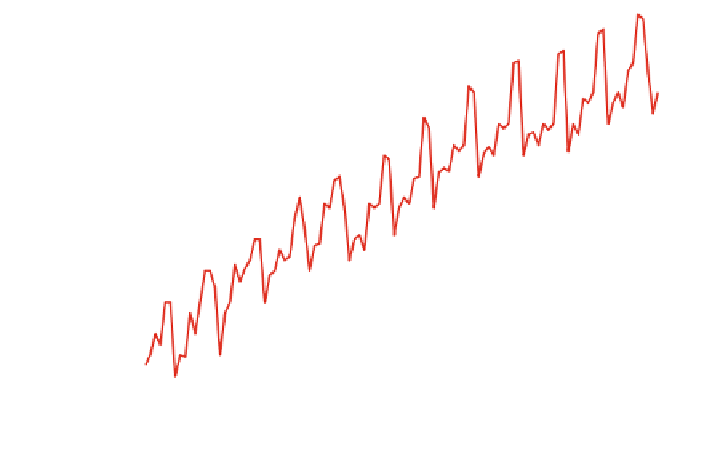Environmental Engineering Reference
In-Depth Information
fluctuations are erratic movements in a time series, which follow no
recognizable or regular pattern. Such movements represent what is
Irregular
in a
time series after trend, cycle, and seasonal variations have been accounted for.
Many irregular
“
left over
”
events that
cannot be forecasted. Events such as earthquakes, accidents, wars, and strikes might
cause irregular
fluctuations in the time series are caused by
“
unusual
”
fluctuations. These can also result from errors made by the time
series analyst.
The time series components already discussed above, do not always occur alone.
They can occur in any combination or can occur altogether. Therefore, no single
best forecasting model exists. A forecasting model suitable for forecasting a certain
component alone may not suit the other components. Thus, one of the most
important problems in forecasting is matching the appropriate forecasting model to
the pattern of the available time series data (Box and Jenkins
1976
). In Fig.
4.1
indicated time series exhibiting trend, seasonal and cyclical components.
There are many forecasting methods that could be used to predict future values
of a time series. These methods can be divided into two broad categories-qualitative
methods and quantitative methods (Bowerman and O
Connell
1987
).
Qualitative forecasting methods, generally, use the opinion of experts to sub-
jectively predict future events. These methods are often used when historical data are
either not available at all, or are scarce. Qualitative forecasting techniques are also
used to predict the changes in historical data patterns. Since the use of these data to
predict future events are based on the assumption that the pattern of historical data
will persist, changes in the data pattern cannot be predicted. The qualitative methods
will not be used to analyze the current research data, so the discussion, on this
method is ignored.
'
6.4
6.2
6
5.8
5.6
5.4
5.2
5
4.8
4.6
1949 1950 1951 1952 1953 1954 1955 1956 1957 1958 1959 1960
Fig. 4.1 Time series exhibiting trend, seasonal and cyclical components 4.3 forecasting methods

























Search WWH ::

Custom Search